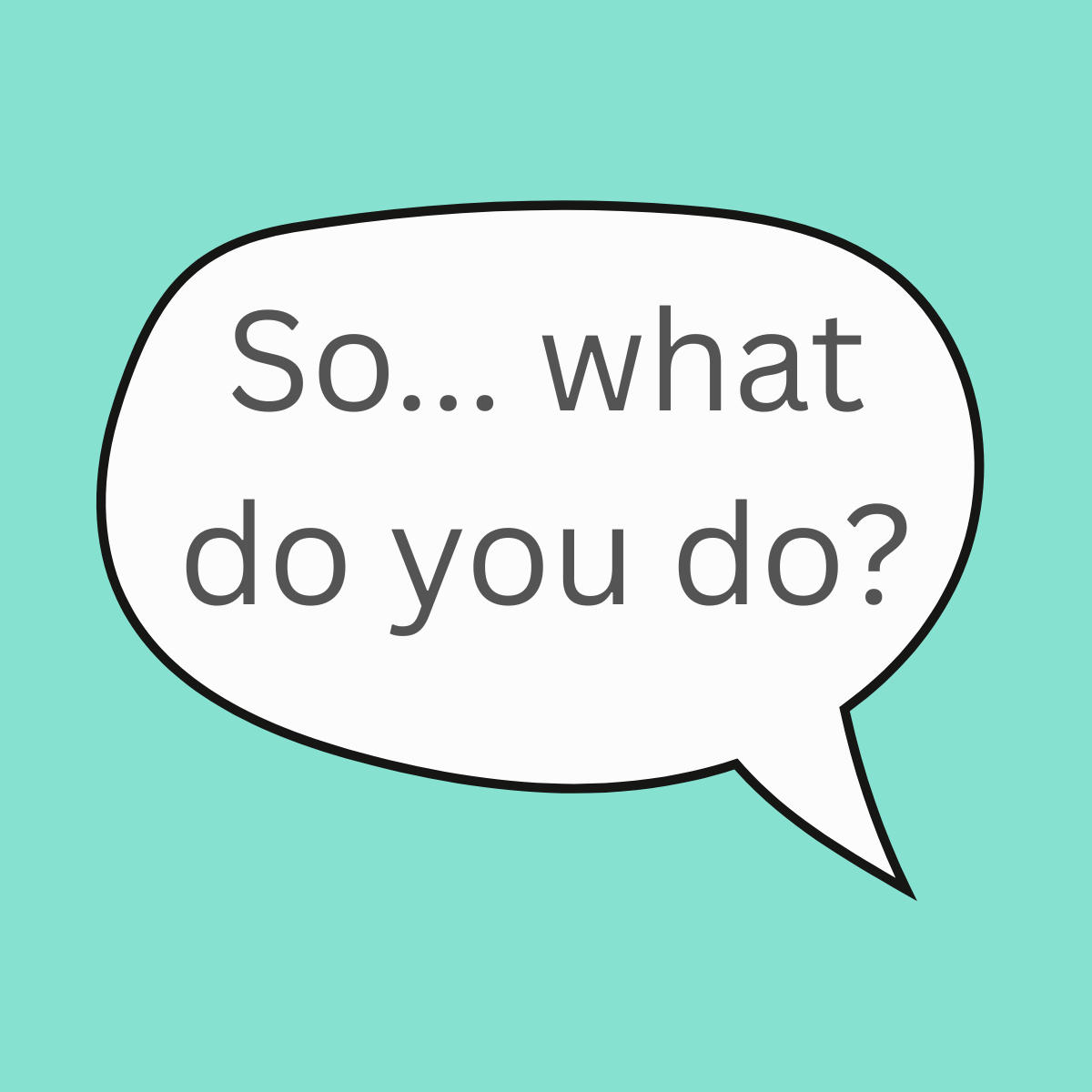The conversation: So what do you do?
When I meet new people and they ask me what I do for work, I often get a puzzled expression in response when I say “I have set up my own business; I work in Internal Communications, offering clients the opportunity to work with an experienced professional in a flexible way”.
“Is that like social media?”, “So, you work in Marketing?”, or “Is that the same as PR?” are common responses.
Internal Communications covers A LOT and can be different in every organisation.
I’ve had a think and these are the ways I’ve described what I do when I’ve met new people in the past, hopefully without boring them to tears and making them feel trapped with the boring person at the party!
The one liner:
“I help organisations communicate with their employees.”
This makes me feel slightly pompous, but it’s the easiest way to sum it up. It usually invites further questions, which is why I prefer the two other answers below.
The creative answer:
“Picture where you work. Now, picture having a reputable journalist or writer on site. That person is a storyteller; they capture the history of a company as it happens. It is their job to capture employee interest and communicate messages in a way that is clear, understandable and engaging.
They make videos, they write emails, they take photos, they write stories, they organise all the company events- they’re the “influencer” of the office.”
That answer feels very dramatic and can underplay the strategic role of internal communications, but it does help people identify “that person” in their company and therefore, understand what I do.
The genuine, earnest answer for when I know the person is genuinely curious and wants to understand:
“There’s a lot of writing, videos, presentations, events, working with Senior Leaders, but at its heart, Internal Communications is about listening and understanding people. It’s about making connections and knowing your audience. If someone comes to me with a change project, I need to be able to visualise, from beginning to end, who is impacted, what kind of communications we need to include in our plan and how we can get feedback. Having good relationships across an organisation goes a long way towards internal communications success.”
After this, the conversation goes one of two ways:
Ok, nice to meet you! (bored to tears)
Oh now I get it, I was part of this project where we could have done with more communication, let me tell you about it……… boom, one more person who understands the value of internal communications!
If these resonate with you, let me know!

